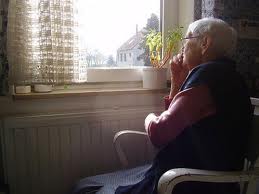Pavilion Publishing and Media Ltd
Blue Sky Offices Shoreham, 25 Cecil Pashley Way, Shoreham-by-Sea, West Sussex, BN43 5FF, UNITED KINGDOM
A map to help local charities and public services find and support those experiencing and at risk of loneliness is needed to ensure resources are allocated where they are needed most according to a report by the University of Kent.
Hidden Citizens: how can we identify the most lonely older adults?, published by the Campaign to End Loneliness alongside UK says local services and councils should use existing data to predict where the most lonely and isolated residents live to make best use of limited resources.
Co-author Dr Hannah J. Swift said: “Our research has identified a number strategies that can help identify where people may be at risk of experiencing loneliness and it also highlights approaches organisations can take for promoting services to a community of older people who experiences circumstances that put them at risk of loneliness.
“In particular we found that addressing loneliness requires better understanding of, and engagement with, local communities as well as better communication, collaboration and cooperation between services if they are to identify, reach and support the most lonely older people.”
The report also highlights that a number of councils are leading the way by identifying people experiencing loneliness, including Gloucestershire County Council, who have created a ‘map’ of factors that could cause it. The map highlights households with just one occupant, a head of household who is aged 65+, situated in a low income area, or do not own a car, amongst other indicators.
Neil Dixon, Joint Strategic Needs Analysis Manager at Gloucestershire County Council said: “Targeting local people who need our help the most is a priority for us in Gloucestershire and we are always looking at new ways to reach them. The map we’ve adapted from a model by Essex County Council means that we can work out how many people could be lonely and where those people need us most.”
The Campaign to End Loneliness warns that loneliness and isolation are as harmful to long-term health as smoking 15 cigarettes a day and that people experiencing severe loneliness may visit their GP more often, and enter residential care earlier.
Councils now have the responsibility in the Care Act to address loneliness and isolation to help prevent people needing care and support, which came into force this April.
Laura Alcock-Ferguson, Director for the Campaign to End Loneliness, added: “Loneliness and isolation in older age is a serious public health issue and increases the risk of conditions including dementia, high blood pressure and depression.
“Finding people who are experiencing loneliness can be challenging, as they are often also some of the most hidden people in our communities. However, it is encouraging that, across the country, there are excellent examples of councils that are employing different strategies to identify residents most at risk of loneliness.
“If local councils and services do not act now to find the people experiencing severe loneliness, we are likely to see the consequences in our hospitals and social care services.”
Read the report in full at www.campaigntoendloneliness.org.uk/hidden-citizens/




Comments are closed.